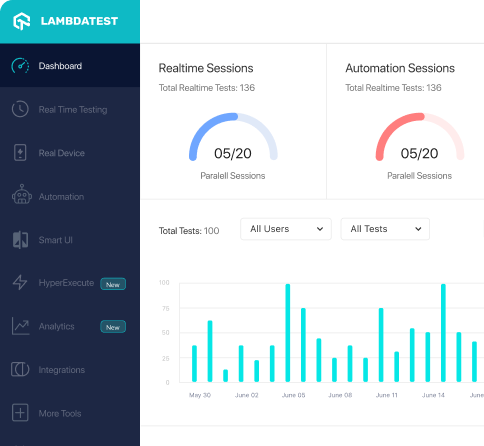How to use MockTypeTest class of org.easymock.tests package
Best Easymock code snippet using org.easymock.tests.MockTypeTest
Source: MockTypeTest.java
...25 * Test mocks create with a MockType26 * 27 * @author Henri Tremblay28 */29public class MockTypeTest {30 private final EasyMockSupport support = new EasyMockSupport();31 private final IMockBuilder<MockTypeTest> builder = EasyMock.createMockBuilder(MockTypeTest.class);32 @Test33 public void fromEasyMockClass() {34 IMethods mock = EasyMock.createMock(MockType.STRICT, IMethods.class);35 MockType type = MocksControl.getControl(mock).getType();36 assertEquals(MockType.STRICT, type);37 assertEquals("EasyMock for interface " + IMethods.class.getName(), mock.toString());38 }39 @Test40 public void fromEasyMockClassWithName() {41 IMethods mock = EasyMock.createMock("test", MockType.STRICT, IMethods.class);42 MockType type = MocksControl.getControl(mock).getType();43 assertEquals(MockType.STRICT, type);44 assertEquals("test", mock.toString());45 }46 @Test47 public void fromEasyMockControlWithName() {48 MocksControl ctrl = (MocksControl) EasyMock.createControl(MockType.STRICT);49 assertEquals(MockType.STRICT, ctrl.getType());50 }51 @Test52 public void fromEasyMockSupportClass() {53 IMethods mock = support.createMock(MockType.STRICT, IMethods.class);54 MockType type = MocksControl.getControl(mock).getType();55 assertEquals(MockType.STRICT, type);56 assertEquals("EasyMock for interface " + IMethods.class.getName(), mock.toString());57 }58 @Test59 public void fromEasyMockSupportClassWithName() {60 IMethods mock = support.createMock("test", MockType.STRICT, IMethods.class);61 MockType type = MocksControl.getControl(mock).getType();62 assertEquals(MockType.STRICT, type);63 assertEquals("test", mock.toString());64 }65 @Test66 public void fromEasyMockSupportControlWithName() {67 MocksControl ctrl = (MocksControl) support.createControl(MockType.STRICT);68 assertEquals(MockType.STRICT, ctrl.getType());69 }70 // The two following tests are showing a strange behavior. The toString doesn't return the71 // default EasyMock implementation. I won't change it right now but it doesn't feel right72 @Test73 public void fromMockBuilderClass() {74 MockTypeTest mock = builder.addMockedMethod("toString").createMock(MockType.STRICT);75 MockType type = MocksControl.getControl(mock).getType();76 assertEquals(MockType.STRICT, type);77 assertEquals("EasyMock for class " + MockTypeTest.class.getName(), mock.toString());78 }79 @Test80 public void fromMockBuilderClassWithName() {81 MockTypeTest mock = builder.addMockedMethod("toString").createMock("test", MockType.STRICT);82 MockType type = MocksControl.getControl(mock).getType();83 assertEquals(MockType.STRICT, type);84 assertEquals("test", mock.toString());85 }86 @Override87 public String toString() {88 return "this is a toString";89 }90}...MockTypeTest
Using AI Code Generation
1import org.easymock.EasyMock;2import org.easymock.MockType;3import org.easymock.tests.IMethods;4import org.easymock.tests.MethodsImpl;5import org.junit.Test;6public class MockTypeTest {7 public void testMockType() {8 IMethods mock = EasyMock.createMock(MockType.NICE, IMethods.class);9 EasyMock.expect(mock.oneArg(true)).andReturn(true);10 EasyMock.replay(mock);11 mock.oneArg(true);12 EasyMock.verify(mock);13 }14 public void testMockTypeWithClass() {15 IMethods mock = EasyMock.createMock(MockType.NICE, MethodsImpl.class);16 EasyMock.expect(mock.oneArg(true)).andReturn(true);17 EasyMock.replay(mock);18 mock.oneArg(true);19 EasyMock.verify(mock);20 }21}22testMockType(org.easymock.tests.MockTypeTest) Time elapsed: 0.007 sec <<< FAILURE!23java.lang.AssertionError: Unexpected method call IMethods.oneArg(true):24 IMethods.oneArg(true): expected: 1, actual: 025 at org.easymock.internal.MocksControl.verifyState(MocksControl.java:70)26 at org.easymock.internal.MocksControl.verify(MocksControl.java:86)27 at org.easymock.tests.MockTypeTest.testMockType(MockTypeTest.java:19)28testMockTypeWithClass(org.easymock.tests.MockTypeTest) Time elapsed: 0.001 sec <<< FAILURE!29java.lang.AssertionError: Unexpected method call IMethods.oneArg(true):30 IMethods.oneArg(true): expected: 1, actual: 031 at org.easymock.internal.MocksControl.verifyState(MocksControl.java:70)32 at org.easymock.internal.MocksControl.verify(MocksControl.java:86)33 at org.easymock.tests.MockTypeTest.testMockTypeWithClass(MockTypeTest.java:27)34 MockTypeTest.testMockType:19 Unexpected method call IMethods.oneArg(true):35 IMethods.oneArg(true): expected: 1, actual: 036 MockTypeTest.testMockTypeWithClass:27 Unexpected method call IMethods.oneArg(true):MockTypeTest
Using AI Code Generation
1import org.easymock.tests.MockTypeTest2import org.easymock.EasyMock3import org.easymock.EasyMock.*4import org.easymock.EasyMockSupport5import org.easymock.IMocksControl6import org.easymock.MockType7import org.easymock.internal.MocksControl8import org.junit.After9import org.junit.Assert10import org.junit.Before11import org.junit.Test12import java.lang.reflect.Method13import java.util.concurrent.Callable14import java.util.concurrent.ExecutorService15import java.util.concurrent.Executors16import java.util.concurrent.Future17import java.util.concurrent.TimeUnit18import java.util.concurrent.atomic.AtomicInteger19class MockTypeTest {20 private val counter = AtomicInteger()21 fun setUp() {22 mockSupport = EasyMockSupport()23 mocksControl = mockSupport!!.createControl()24 executorService = Executors.newCachedThreadPool()25 }26 fun tearDown() {27 mockSupport!!.verifyAll()28 executorService!!.shutdown()29 }30 fun testMockTypeStrict() {31 val mock = mockSupport!!.createMock(MockTypeTest::class.java)32 expect(mock.count()).andReturn(1)33 expect(mock.count()).andReturn(2)34 expect(mock.count()).andReturn(3)35 mockSupport!!.replayAll()36 Assert.assertEquals(1, mock.count())37 Assert.assertEquals(2, mock.count())38 Assert.assertEquals(3, mock.count())39 }40 fun testMockTypeNice() {41 val mock = mockSupport!!.createMock(MockTypeTest::class.java)42 expect(mock.count()).andReturn(1)43 expect(mock.count()).andReturn(2)44 expect(mock.count()).andReturn(3)45 mockSupport!!.replayAll()46 Assert.assertEquals(1, mock.count())47 Assert.assertEquals(2, mock.count())48 Assert.assertEquals(3, mock.count())49 }50 fun testMockTypeDefault() {51 val mock = mockSupport!!.createMock(MockTypeTest::MockTypeTest
Using AI Code Generation
1public class MockTypeTest {2 public static void main(String[] args) {3 TypeTest mock = EasyMock.createMock(TypeTest.class);4 EasyMock.expect(mock.testType(EasyMock.isA(Type.class)))5 .andReturn(Boolean.TRUE);6 EasyMock.replay(mock);7 System.out.println(mock.testType(new Type()));8 EasyMock.verify(mock);9 }10}Blogs
Check out the latest blogs from LambdaTest on this topic:
Hey Testers! We know it’s been tough out there at this time when the pandemic is far from gone and remote working has become the new normal. Regardless of all the hurdles, we are continually working to bring more features on-board for a seamless cross-browser testing experience.
In some sense, testing can be more difficult than coding, as validating the efficiency of the test cases (i.e., the ‘goodness’ of your tests) can be much harder than validating code correctness. In practice, the tests are just executed without any validation beyond the pass/fail verdict. On the contrary, the code is (hopefully) always validated by testing. By designing and executing the test cases the result is that some tests have passed, and some others have failed. Testers do not know much about how many bugs remain in the code, nor about their bug-revealing efficiency.
How do we acquire knowledge? This is one of the seemingly basic but critical questions you and your team members must ask and consider. We are experts; therefore, we understand why we study and what we should learn. However, many of us do not give enough thought to how we learn.
Even though several frameworks are available in the market for automation testing, Selenium is one of the most renowned open-source frameworks used by experts due to its numerous features and benefits.
The sky’s the limit (and even beyond that) when you want to run test automation. Technology has developed so much that you can reduce time and stay more productive than you used to 10 years ago. You needn’t put up with the limitations brought to you by Selenium if that’s your go-to automation testing tool. Instead, you can pick from various test automation frameworks and tools to write effective test cases and run them successfully.
Automation Testing Tutorials
Learn to execute automation testing from scratch with LambdaTest Learning Hub. Right from setting up the prerequisites to run your first automation test, to following best practices and diving deeper into advanced test scenarios. LambdaTest Learning Hubs compile a list of step-by-step guides to help you be proficient with different test automation frameworks i.e. Selenium, Cypress, TestNG etc.
LambdaTest Learning Hubs:
- JUnit Tutorial
- TestNG Tutorial
- Webdriver Tutorial
- WebDriverIO Tutorial
- Protractor Tutorial
- Selenium 4 Tutorial
- Jenkins Tutorial
- NUnit Tutorial
- Jest Tutorial
- Playwright Tutorial
- Cypress Tutorial
- PyTest Tutorial
YouTube
You could also refer to video tutorials over LambdaTest YouTube channel to get step by step demonstration from industry experts.
Most used methods in MockTypeTest
Try LambdaTest Now !!
Get 100 minutes of automation test minutes FREE!!



